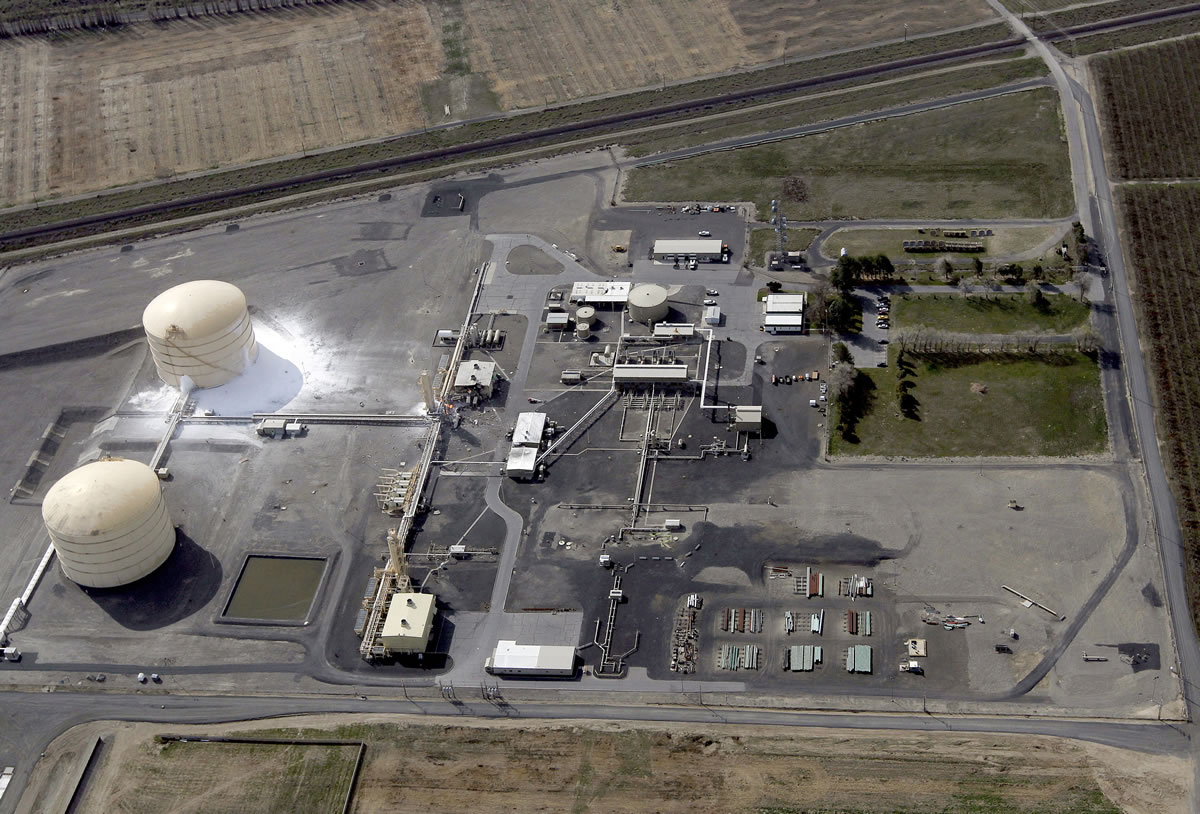Local angle
Williams Northwest Pipeline’s route starts in Stanfield, Ore., and runs along the north side of the Columbia River from Plymouth through Klickitat and Skamania counties, then passing north of Washougal to meet a north-south natural gas pipeline near La Center.
The line also links with Portland-based utility NW Natural, which serves more than 70,000 customers in Southwest Washington. No NW Natural customers were affected by Monday’s explosion in Plymouth, said corporate communications manager Melissa Moore.
Ground movement caused natural-gas pipeline explosions in North Bonneville in 1999, in Kalama in 1997 and in Castle Rock in 1995.
Ground movement caused natural-gas pipeline explosions in North Bonneville in 1999, in Kalama in 1997 and in Castle Rock in 1995.
Local angle
Williams Northwest Pipeline's route starts in Stanfield, Ore., and runs along the north side of the Columbia River from Plymouth through Klickitat and Skamania counties, then passing north of Washougal to meet a north-south natural gas pipeline near La Center.
The line also links with Portland-based utility NW Natural, which serves more than 70,000 customers in Southwest Washington. No NW Natural customers were affected by Monday's explosion in Plymouth, said corporate communications manager Melissa Moore.
Ground movement caused natural-gas pipeline explosions in North Bonneville in 1999, in Kalama in 1997 and in Castle Rock in 1995.
Ground movement caused natural-gas pipeline explosions in North Bonneville in 1999, in Kalama in 1997 and in Castle Rock in 1995.
State and federal regulators looking for what caused an explosion at a liquefied natural gas facility on the Washington-Oregon border began interviewing injured workers Tuesday, while a team that went inside found no lingering fire.
Firefighters and facility employees entered the damaged processing building with infrared imaging equipment and confirmed no flames remained, the Benton County Sheriff’s Department said.
The safety check came after the explosion Monday at the Williams Northwest Pipeline storage facility outside Plymouth, Wash., injured five employees and ruptured a huge liquefied natural gas storage tank.
Deputy Joe Lusignan said one worker was still being treated at a hospital in Portland, Ore., for burns to the face and hands and four others were released after treatment at a hospital in Hermiston, Ore. Their identities haven’t been released.
Some gas continued to leak from the tank a day later, but it was being dissipated by the wind, Lusignan said.
The explosion and fire prompted the evacuation of about 400 residents in a 2-mile radius. With potential for a subsequent major explosion diminishing, that radius was reduced to 1 mile on Tuesday. A nearby highway and Burlington Northern Railroad traffic have reopened, he said.
Williams spokeswoman Michele Swaner did not immediately return a call for comment on Tuesday.
The outer wall of the damaged tank was visibly punctured, allowing white insulation to drain out onto the ground, but it’s still unclear if the inner wall was affected, said David Lykken, pipeline safety director for the Washington Utilities and Transportation Commission. The natural gas inside the tank is supercooled to a liquid, but is not pressurized, and the top layer is normally in a gaseous state.
A number of experts on Tuesday were investigating the cause of the explosion. They were an engineer from the Washington Utilities and Transportation Commission, an inspector from the U.S. Department of Transportation’s Pipeline and Hazardous Materials Administration, and an officer from the Washington Department of Labor and Industries, Lykken said.
Sheriff Steve Keane said his office would also investigate, looking for any potential criminal implications.
The facility is the only one of its kind in Washington that is manufacturing liquefied natural gas, Lykken said. Oregon has a similar facility along the Columbia river west of Portland.
The Washington facility provides supplemental gas during times of high demand for a 4,000-mile pipeline stretching from the Canadian border to southern Utah. Gas is drawn off from the pipeline during the summer, cooled and stored until it is needed in the winter, Lykken said. Its two liquefied natural gas storage tanks each have a capacity of 1.2 billion cubic feet. The one that punctured was not full.
Lykken said an explosion like this is rare, and nothing like this has happened before at the Washington facility. He added that regular annual inspections by the commission have turned up some operational and procedural violations at the facility in the past, but they were all resolved.
Operations are similar to those at liquefied natural gas facilities at export terminals being considered in Oregon.



